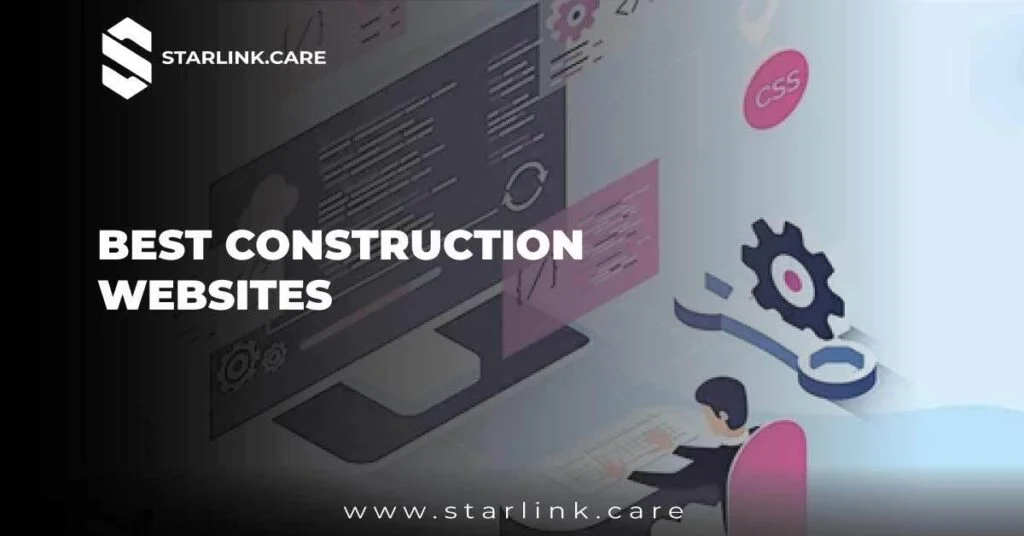
Building the Perfect Online Presence: The Best Construction Websites
In the construction industry, a strong online presence is crucial. Whether you’re a general contractor, a specialized builder, or a construction consultant, having a well-designed website can set you apart from the competition and attract more clients. But with so many options out there, how do you create or choose the best construction websites for your needs? In this guide, we’ll walk you through what makes a great construction website and provide a step-by-step guide to help you build or select the perfect one.
Why Your Construction Website Matters
Picture this: You’re a contractor with years of experience and a portfolio full of impressive projects. Yet, when potential clients search for your services online, they find a dated website that fails to showcase your expertise. A modern, well-designed website can make a significant difference. Here’s why having a top-notch best construction websites is vital:
- First Impressions Count: Your website is often the first interaction potential clients have with your business. A professional, engaging site builds trust and credibility.
- Showcase Your Work: A great website allows you to display your portfolio, highlight past projects, and demonstrate your expertise.
- Attract New Clients: With the right design and functionality, your website can attract and convert visitors into clients.
Key Features of the Best Construction Websites
To stand out in the construction industry, your website should include several key features. Here’s what to look for:
1. Professional Design
A professional design is crucial for making a strong impression. Your website should reflect the quality of your work and your brand’s identity. Use high-quality images, a clean layout, and a color scheme that matches your brand.
For inspiration, check out Procore or Buildertrend. Both have sleek, modern designs that convey professionalism and reliability.
2. Showcase Your Portfolio
A well-organized portfolio is essential for showcasing your past projects. Use a gallery or project showcase to highlight the variety and quality of your work. Each project should include high-resolution images, project details, and client testimonials if possible.
For example, Starlink effectively uses its portfolio to display a diverse range of projects, from commercial buildings to residential developments.
3. User-Friendly Navigation
User-friendly navigation ensures that visitors can easily find the information they need. Organize your site with clear menus and categories. Include a search function to help users quickly locate specific services or projects.
Websites like Starlink offer intuitive navigation with well-organized content that makes it easy for visitors to explore various aspects of their business.
4. Mobile Responsiveness
In today’s world, many users access websites from their smartphones and tablets. Ensure your website is mobile-responsive so it looks and functions well on all devices. This is crucial for keeping potential clients engaged and reducing bounce rates.
Check out Gilbane Building Company to see how a mobile-responsive design enhances the user experience across different devices.
5. Clear Calls to Action
Effective calls to action (CTAs) guide visitors toward taking desired actions, such as requesting a quote, contacting you, or scheduling a consultation. Place CTAs strategically throughout your site to encourage engagement.
For example, Skanska uses clear CTAs like “Contact Us” and “Request a Quote” to prompt visitors to take the next step.
6. Client Testimonials and Reviews
Including client testimonials and reviews adds credibility and builds trust. Showcase positive feedback from past clients to demonstrate your reliability and the quality of your work.
Websites like Hensel Phelps effectively feature client testimonials that highlight their commitment to excellence and client satisfaction.
7. Contact Information and Location
Make it easy for potential clients to get in touch by prominently displaying your contact information and location. Include a contact form, phone number, email address, and a map to your office.
For instance, Mortenson provides clear contact details and a map, making it easy for clients to reach out and visit their office.
Step-by-Step Guide to Building a Construction Website
If you’re ready to build or improve your construction website, follow this step-by-step guide:
Step 1: Define Your Goals
Start by defining what you want to achieve with your website. Are you looking to attract new clients, showcase your portfolio, or provide information about your services? Having clear goals will guide the design and functionality of your site.
Step 2: Choose a Domain Name and Hosting
Select a domain name that reflects your business and is easy to remember. For hosting, choose a reliable provider with good customer support and uptime. Platforms like Bluehost and SiteGround offer great hosting options for best construction websites.
Step 3: Select a Website Builder or CMS
Choose a website builder or content management system (CMS) that suits your needs. Platforms like Starlink, WordPress and Wix offer customizable templates and user-friendly interfaces.
Step 4: Design Your Website
Design your site with a focus on professionalism, user-friendliness, and mobile responsiveness. Use high-quality images, clear navigation, and well-placed CTAs.
Step 5: Add Content
Populate your site with relevant content, including your portfolio, service descriptions, and client testimonials. Ensure your content is engaging, informative, and optimized for SEO.
Step 6: Test and Launch
Before launching, test your website thoroughly. Check for broken links, ensure all forms work correctly, and verify that your site looks good on all devices. Once everything is in order, it’s time to go live.
Step 7: Promote Your Website
After launch, promote your site through social media, email marketing, and other channels. Regularly update your content and monitor your site’s performance to make improvements as needed.
Conclusion
Creating the best construction websites involves a combination of professional design, user-friendly features, and effective content. By showcasing your portfolio, providing clear CTAs, and ensuring mobile responsiveness, you can build a website that attracts and engages potential clients.
Best Construction Websites Ready to get started? Explore platforms like Starlink, WordPress and Wix to find the right tools for your construction website. With the right approach, you can build a powerful online presence that drives success for your business.







